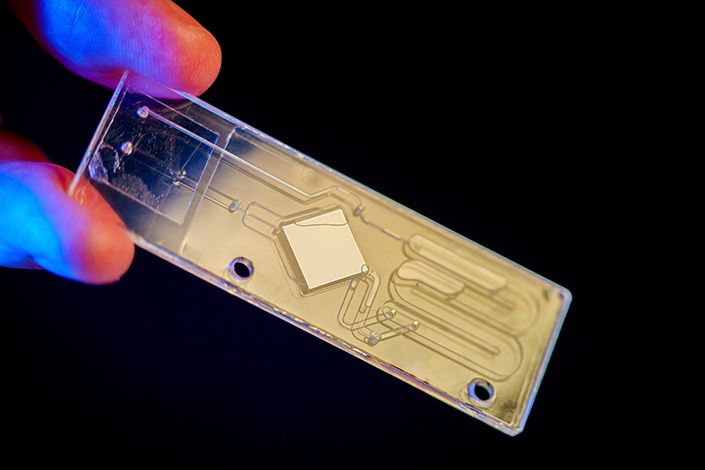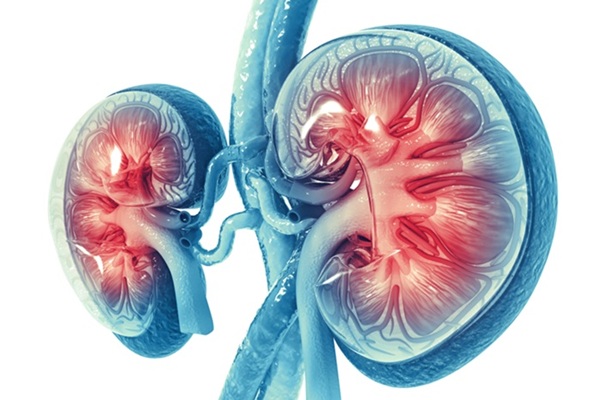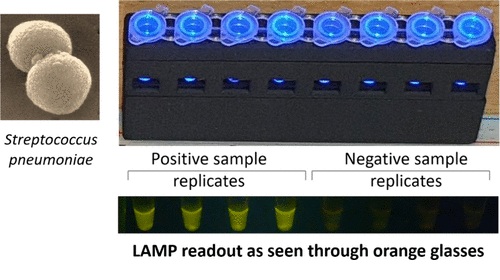New Analysis Method Detects Pathogens in Blood Faster and More Accurately by Melting DNA
|
By LabMedica International staff writers Posted on 22 Feb 2024 |

Globally, an alarming one in every five deaths is attributed to complications related to sepsis, with children accounting for 41% of these fatalities. Common practice involves administering antibiotics to sepsis patients while waiting for blood culture results, which can contribute to antibiotic resistance. Ineffectively treating sepsis can be detrimental, as up to 30% of patients receive incorrect treatments, further elevating their risk of death. The critical nature of timely and accurate diagnosis in sepsis cases is underscored by the fact that the mortality risk escalates by 4% every hour the infection is not properly identified or treated. Now, a new analysis technique offers quicker and more precise pathogen detection in blood samples compared to traditional blood cultures, which are the standard in infection diagnosis.
The new method, called digital DNA melting analysis, has been developed by researchers at UC San Diego (La Jolla, CA, USA) and is capable of delivering results in less than six hours. This marks a significant improvement over the typical 15 hours to several days required by culture methods, depending on the pathogen involved. The process utilizes universal digital high-resolution DNA melting, involving heating DNA until it separates. Each DNA sequence reveals a unique signature during the melting process. By imaging and analyzing this process, machine learning algorithms can discern the types of DNA in the samples and identify pathogens. This method not only outpaces blood cultures in terms of speed but also has a substantially lower risk of generating false positives compared to other emerging DNA detection technologies, such as Next Generation Sequencing.
The research began with one milliliter of blood from each of 17 patients in a preliminary clinical study. These samples were collected concurrently with those for blood cultures from infants and toddlers. The researchers honed the DNA isolation process and machine learning techniques to minimize or eliminate interference from human DNA in contrast to pathogen DNA in the samples. They refined a machine learning algorithm to accurately distinguish between the melting curves of pathogens and background noise. This algorithm correlates the observed curves with a database of known DNA melt curves. Moreover, it can identify curves produced by organisms not in this database, which is particularly useful in detecting rare or emerging pathogens in a sample.
The results from this method were not only consistent with those obtained from blood cultures of the same samples, but they also did not yield any false positives. This contrasts with other tests based on nucleic acid amplification and next-generation DNA sequencing databases, which tend to amplify all present DNA, leading to false positives. Contamination from various sources such as the environment, test tubes, reagents, and skin can often lead to challenges in interpreting test results. This new method detected pathogens 7.5 hours to approximately 3 days faster than conventional blood cultures. Additionally, it provides more than just a binary positive or negative outcome; it quantifies the extent of pathogen presence in the samples. Future plans include conducting a more extensive clinical study and extending the methodology to adult patients.
“This is the first time this method has been tested on whole blood from patients suspected of having sepsis. So this study is a more realistic preview of how the technology could perform in real clinical scenarios,” said Stephanie Fraley, a professor at the UC San Diego. “We want to give doctors the ability to treat their patients based not on aggregate data, but with precise, accurate individual data, enabling truly personalized medicine.”
Related Links:
UC San Diego
Latest Microbiology News
- High-Throughput Enteric Panels Detect Multiple GI Bacterial Infections from Single Stool Swab Sample
- Fast Noninvasive Bedside Test Uses Sugar Fingerprint to Detect Fungal Infections
- Rapid Sepsis Diagnostic Device to Enable Personalized Critical Care for ICU Patients
- Microfluidic Platform Assesses Neutrophil Function in Sepsis Patients
- New Diagnostic Method Confirms Sepsis Infections Earlier
- New Markers Could Predict Risk of Severe Chlamydia Infection
- Portable Spectroscopy Rapidly and Noninvasively Detects Bacterial Species in Vaginal Fluid
- CRISPR-Based Saliva Test Detects Tuberculosis Directly from Sputum
- Urine-Based Assay Diagnoses Common Lung Infection in Immunocompromised People
- Saliva Test Detects Implant-Related Microbial Risks
- New Platform Leverages AI and Quantum Computing to Predict Salmonella Antimicrobial Resistance
- Early Detection of Gut Microbiota Metabolite Linked to Atherosclerosis Could Revolutionize Diagnosis
- Viral Load Tests Can Help Predict Mpox Severity
- Gut Microbiota Analysis Enables Early and Non-Invasive Detection of Gestational Diabetes
- Credit Card-Sized Test Boosts TB Detection in HIV Hotspots
- Fecal Metabolite Profiling Predicts Mortality in Critically Ill Patients
Channels
Clinical Chemistry
view channel
VOCs Show Promise for Early Multi-Cancer Detection
Early cancer detection is critical to improving survival rates, but most current screening methods focus on individual cancer types and often involve invasive procedures. This makes it difficult to identify... Read more
Portable Raman Spectroscopy Offers Cost-Effective Kidney Disease Diagnosis at POC
Kidney disease is typically diagnosed through blood or urine tests, often when patients present with symptoms such as blood in urine, shortness of breath, or weight loss. While these tests are common,... Read moreMolecular Diagnostics
view channel
New Diagnostic Method Detects Pneumonia at POC in Low-Resource Settings
Pneumonia continues to be one of the leading causes of death in low- and middle-income countries, where limited access to advanced laboratory infrastructure hampers early and accurate diagnosis.... Read more
Blood Immune Cell Analysis Detects Parkinson’s Before Symptoms Appear
Early diagnosis of Parkinson’s disease remains one of the greatest challenges in neurology. The condition, which affects nearly 12 million people globally, is typically identified only after significant... Read moreHematology
view channel
ADLM’s New Coagulation Testing Guidance to Improve Care for Patients on Blood Thinners
Direct oral anticoagulants (DOACs) are one of the most common types of blood thinners. Patients take them to prevent a host of complications that could arise from blood clotting, including stroke, deep... Read more
Viscoelastic Testing Could Improve Treatment of Maternal Hemorrhage
Postpartum hemorrhage, severe bleeding after childbirth, remains one of the leading causes of maternal mortality worldwide, yet many of these deaths are preventable. Standard care can be hindered by delays... Read more
Pioneering Model Measures Radiation Exposure in Blood for Precise Cancer Treatments
Scientists have long focused on protecting organs near tumors during radiotherapy, but blood — a vital, circulating tissue — has largely been excluded from dose calculations. Each blood cell passing through... Read moreImmunology
view channel
Blood-Based Liquid Biopsy Model Analyzes Immunotherapy Effectiveness
Immunotherapy has revolutionized cancer care by harnessing the immune system to fight tumors, yet predicting who will benefit remains a major challenge. Many patients undergo costly and taxing treatment... Read more
Signature Genes Predict T-Cell Expansion in Cancer Immunotherapy
Modern cancer immunotherapies rely on the ability of CD8⁺ T cells to rapidly multiply within tumors, generating the immune force needed to eliminate cancer cells. However, the biological triggers behind... Read morePathology
view channel
New Molecular Analysis Tool to Improve Disease Diagnosis
Accurately distinguishing between similar biomolecules such as proteins is vital for biomedical research and diagnostics, yet existing analytical tools often fail to detect subtle structural or compositional... Read more
Tears Offer Noninvasive Alternative for Diagnosing Neurodegenerative Diseases
Diagnosing and monitoring eye and neurodegenerative diseases often requires invasive procedures to access ocular fluids. Ocular fluids like aqueous humor and vitreous humor contain valuable molecular information... Read moreTechnology
view channel
Cell-Sorting Device Uses Electromagnetic Levitation to Precisely Direct Cell Movement
Sorting different cell types—such as cancerous versus healthy or live versus dead cells—is a critical task in biology and medicine. However, conventional methods often require labeling, chemical exposure,... Read more
Embedded GPU Platform Enables Rapid Blood Profiling for POC Diagnostics
Blood tests remain a cornerstone of medical diagnostics, but traditional imaging and analysis methods can be slow, costly, and reliant on dyes or contrast agents. Now, scientists have developed a real-time,... Read moreIndustry
view channel
Qiagen Acquires Single-Cell Omics Firm Parse Biosciences
QIAGEN (Venlo, Netherlands) has entered into a definitive agreement to fully acquire Parse Biosciences (Seattle, WA, USA), a provider of scalable, instrument-free solutions for single-cell research.... Read more
Puritan Medical Products Showcasing Innovation at AMP2025 in Boston
Puritan Medical Products (Guilford, ME, USA), the world’s most trusted manufacturer of swabs and specimen collection devices, is set to exhibit at AMP2025 in Boston, Massachusetts, from November 11–15.... Read more
Advanced Instruments Merged Under Nova Biomedical Name
Advanced Instruments (Norwood, MA, USA) and Nova Biomedical (Waltham, MA, USA) are now officially doing business under a single, unified brand. This transformation is expected to deliver greater value... Read more









 Analyzer.jpg)












